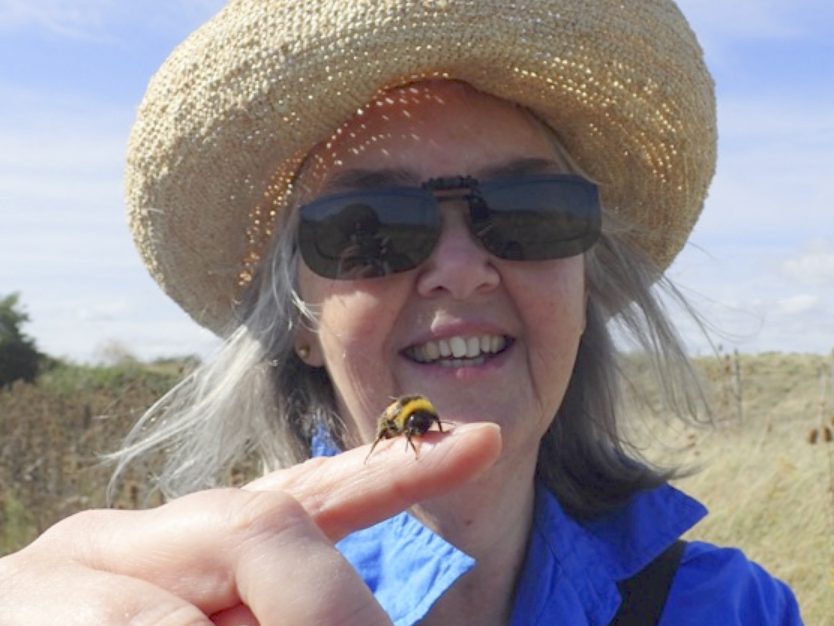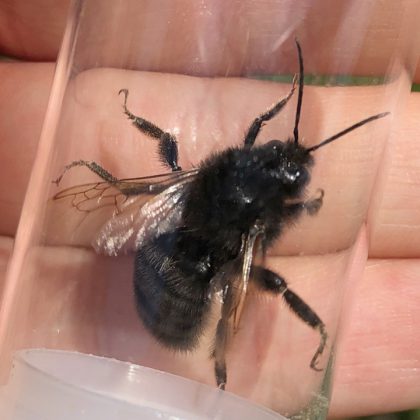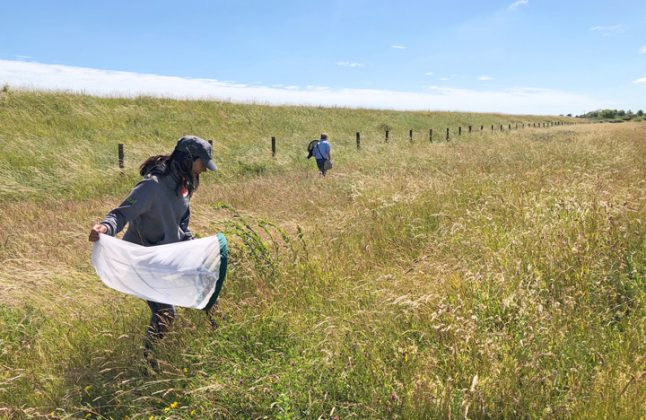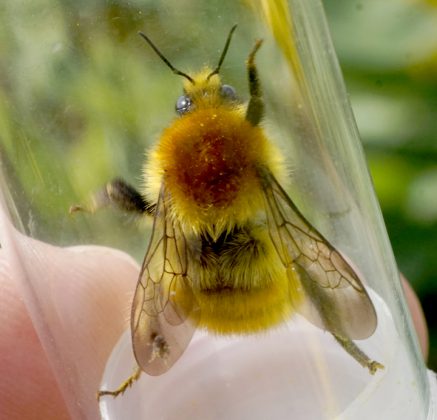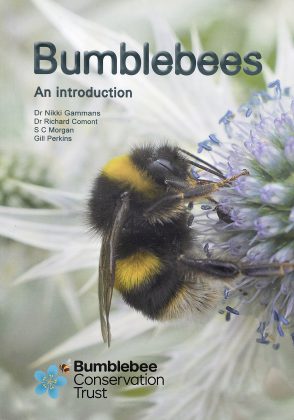Most people know that Rye Harbour Nature Reserve is an amazing place for birds. Fewer know that it is also a hot spot for rare bees. Reserve manager Dr Barry Yates and his land management team have been working creatively for some time to improve the diversity and extent of wild flowers and their hard work has paid off. This year, despite the dry weather, there are swathes of bright blue viper’s bugloss, knee-high clumps of red clover, huge patches of yellow melilot and masses of purple vetch, all excellent forage for bumblebees and other invertebrates.
Morgan and Peter Greenhalf have been involved in identifying and recording bumblebees for over a decade. They began by working with the short-haired bumblebee reintroduction project at Dungeness. “I got hooked on bumblebees after going to a talk by Dr Nikki Gammans,” Morgan said. “She was so enthusiastic and bumblebees are such fascinating, charismatic insects, that I wanted to find out more.” After attending various training courses, the pair began volunteering to count bumblebees through the summer season and have been doing so ever since. Morgan designed and helped edit the Bumblebee Conservation Trust’s very first book, Bumblebees: an Introduction and the pair now offer bumblebee identification days and ‘bee-safari’ walks.
“The original project has now evolved into Bee Connected,” Peter said, “but the initial 10 year study produced the biggest data set on bumblebees in Britain and possibly the world. The results have proven that, if given enough forage and safe places to nest, rare bee numbers do increase.”
This July, Morgan and Peter led several bumblebee courses and walks on the reserve. During the walks, members of the group had the chance to practice netting and potting a bee for close inspection and identification. “The netting process doesn’t really bother the bees,” Peter explained. “They are tough, armour-covered insects so the soft net doesn’t hurt them and they are only in the pot for a minute or so while they are identified. We’re very careful never to keep a bee in a pot for any longer than five minutes as they might begin to overheat. In fact most bees are so unaffected by the experience that they often go straight back to feeding. Some might even take a rest on your finger before flying off.”
On their walks this July they saw good numbers of the seven commonest species of bumblebee, but also some very rare bumblebees indeed. They recorded 43 brown-banded bumblebees, a moss carder bumblebee and eight ruderal bumblebees. This bee is listed as nationally scarce and is included in the UK Biodiversity Action Plan as a priority species. “It was fantastic,” Morgan remembered. “To find one of these very rare bees is exciting enough… to find so many in one small area of the flood defence bund was truly exceptional … it confirms that there is a nest of these very rare bumbles here on the reserve.”
“It was very reassuring to find brown-banded bumblebees too,” Peter explained. “While they are also listed as a rare species they used to be quite common at Rye Harbour and we would find them in good numbers, along with the very rare moss carder bumblebee. In the last three years we have seen almost no moss carders on the reserve and fewer and fewer brown-banded Bumblebees. Seeing a moss carder and getting such a high count of brown-banded Bumblebees is very encouraging.”
Morgan and Peter are available to give talks on bumblebee identification throughout the year and to lead ‘bee-safari’ walks though the summer. Please contact avocetgallery@gmail.com.
Image Credits: Peter Greenhalf , s morgan .



